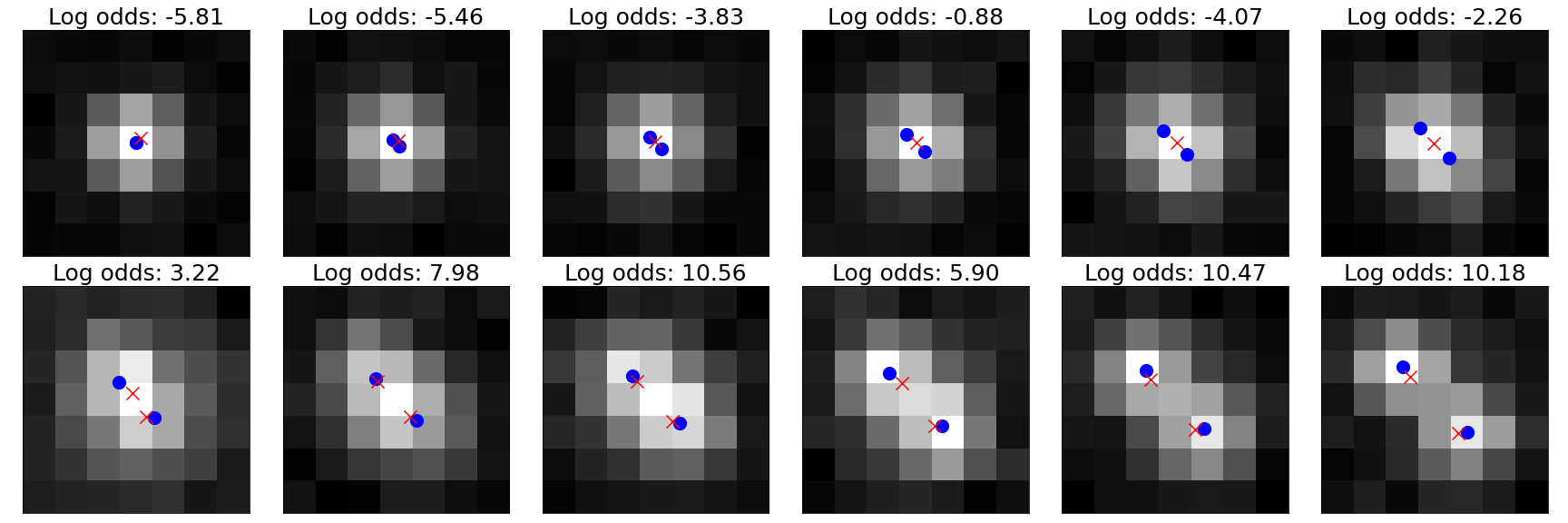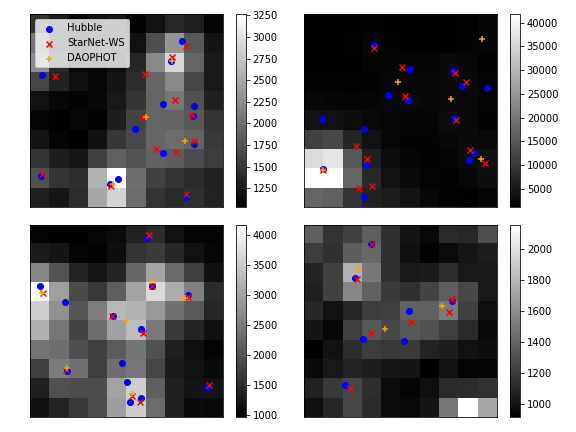This Github repository implements StarNet, a probabilistic deblender employing variational Bayesian inference and deep learning. The scripts here reproduce the results found in
Runjing Liu, Jon D. McAuliffe, and Jeffrey Regier. Variational Inference for Deblending Crowded Starfields. https://arxiv.org/pdf/2102.02409.pdf
Ongoing developments can be found in the BLISS (Bayesian LIght Source Separation) repository. Developments include
- Implementation of neural network training in Pytorch Lighting for lightweight, optimized code.
- Automatic hyper-parameter tuning in Optuna.
- Extensions to galaxy models.
This code relies on Pytorch. Pytorch installation details may vary depending on whether CUDA is available on your machine. Installation details can be found here.
Our results were created under Pytorch version 1.4. When CUDA is available, installation with conda can be done by typing
conda install pytorch==1.4.0 torchvision==0.5.0 -c pytorch
Then, to install the local library deblending_runjingdev and its other dependencies, run
pip install ./
To download the SDSS image of M2, type
# move to the sdss data directory
cd sdss_stage_dir
# download data
./get_sdss_data.sh
And to dowload the Hubble catalog of M2, type
# move to the hubbe data directory
cd experiments_m2/hubble_data/
# download hubble data
wget https://archive.stsci.edu/pub/hlsp/acsggct/ngc7089/hlsp_acsggct_hst_acs-wfc_ngc7089_r.rdviq.cal.adj.zpt
For a simple example of sleep phase training, see the ./experiments_deblending/ directory.
In that directory, run
python train_encoder.py
which will fit a variational distribution on sleep-phase simulated data.
The simulated data are 7 x 7 tiles with either one or two stars.
See ./experiments_deblending/deblending_experiment.ipynb to load the fitted variational distribution.
Sample results, after 30 epochs of training:
Blue are true locations, red are estimated locations. Log-odds are log(Prob(#stars = 2)) - log(Prob(#nstars = 1)) under the fitted variational distribution.
In the ./experiments_m2/ directory, run
./train_wake_sleep.sh
to fit StarNet on the subimage of M2 described in the paper.
After fitting, the key results in our paper can be loaded in ./experiments_m2/jupyter/m2_results.ipynb.
(For convenience, some fits are already pre-saved; the notebook will run even without training).
Example subimages from M2:
where blue are detetions from the Hubble catalog (used as our ground truth) and red are detections by StarNet. Orange are detections from a catalog reported by An et al., who used a competing method called DAOPHOT.

